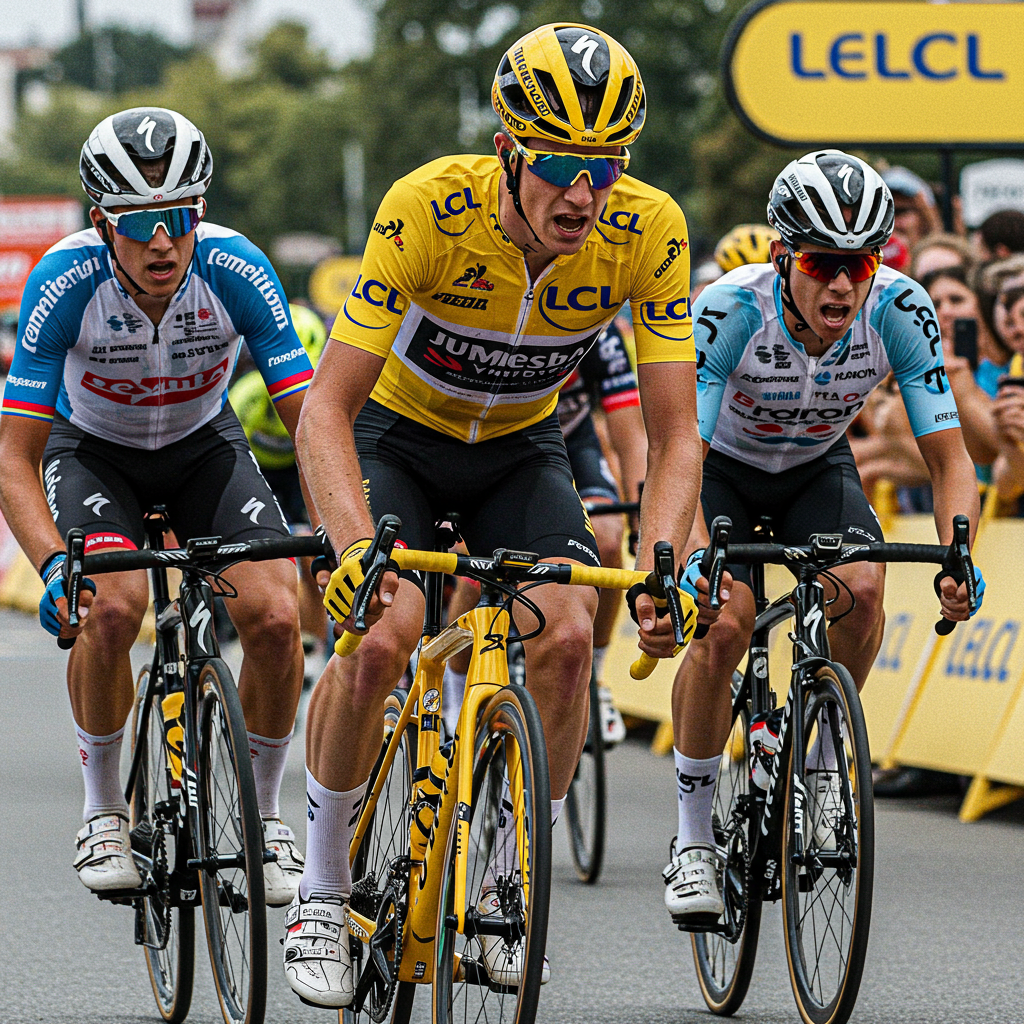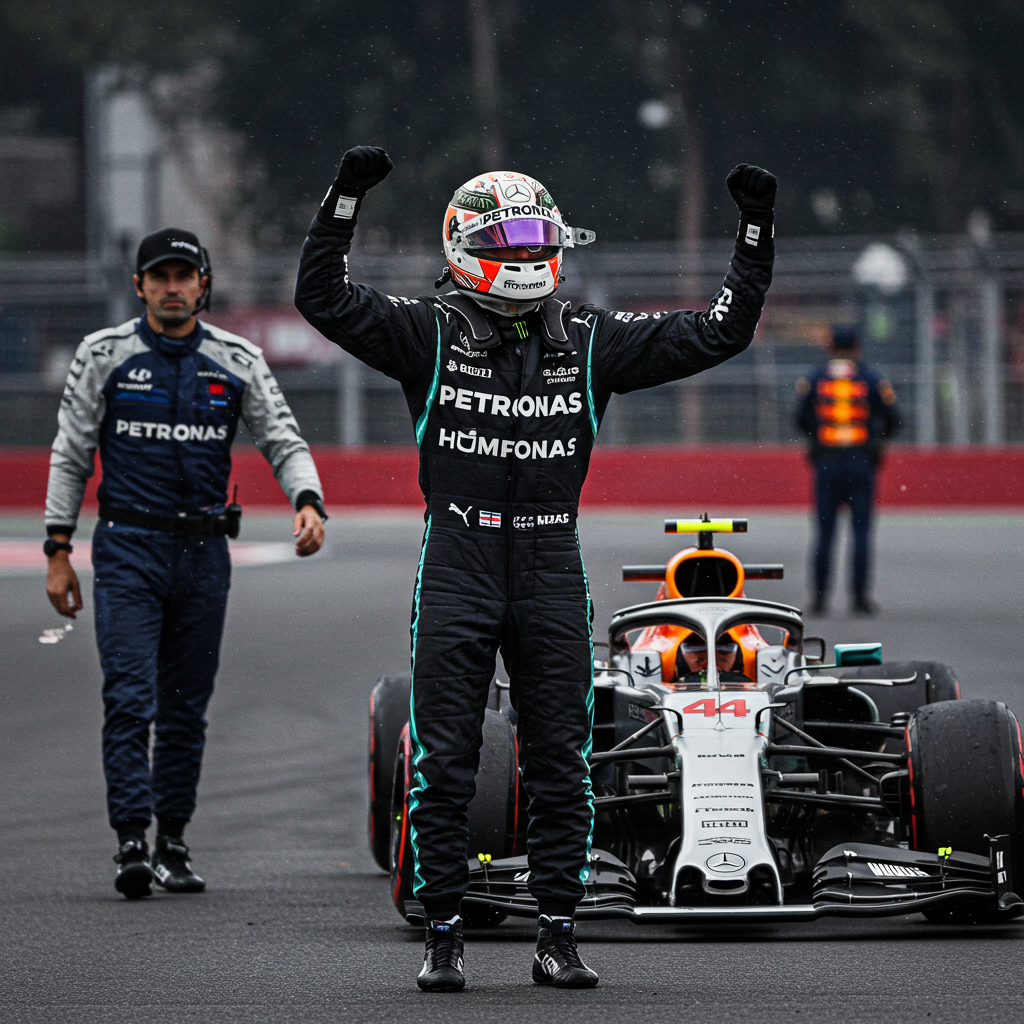The 2025 Tour de France exploded into action from the very first pedal stroke. Belgium’s Jasper Philipsen seized the opening stage win in a chaotic sprint finish held in Lille, securing the coveted first yellow jersey. But the day wasn’t just about the sprint; brutal crosswinds shattered the peloton, instantly putting time into several key contenders for the overall title while positioning race favorites Jonas Vingegaard and Tadej Pogacar at the front.
From the outset, speculation surrounding the potential impact of northern France’s weather dominated discussions. riders and teams knew that strong winds on the flat, exposed roads near the Belgian border could spell disaster. This prediction proved accurate. As the peloton raced towards Lille, the crosswinds intensified, creating the treacherous conditions ripe for echelons – diagonal lines of riders sheltering from the wind.
Wind Wreaks Havoc: The Decisive Split
The true drama unfolded with approximately 17 kilometers remaining. Showing their intent and form from day one, the Visma-Lease a Bike squad of two-time champion Jonas Vingegaard took control. Accelerating fiercely into the crosswinds, they forced a crucial split in the main group. Riders caught on the wrong side of the road, or whose teams lacked the positioning and power to stay at the front, were instantly distanced.
This tactical masterclass immediately impacted the General Classification (GC) battle. Several prominent riders aiming for the yellow jersey in Paris found themselves trapped behind the split. Notably, Remco Evenepoel (Soudal-Quickstep), Primoz Roglic, and Geraint Thomas (both part of the second group) were among those losing precious time. Along with others like Mattias Skjelmose, this group finished 49 seconds behind the leaders. The sight of Vingegaard and his key rival, Tadej Pogacar, safely positioned in the lead group was a significant early statement. They gained nearly a minute on some potential challengers on a seemingly flat stage.
Evenepoel Reacts to Time Loss
For Remco Evenepoel, the day was a clear setback. Despite being a popular figure in nearby Lille, he lost vital seconds. He didn’t mince words post-stage, telling UK broadcasters that his team had “fell asleep” when the decisive move occurred. This candid assessment highlighted the critical nature of positioning and vigilance in unpredictable Tour de France stages. It was a tough start for a rider hoping to challenge Vingegaard and Pogacar.
Philipsen Capitalizes on Reduced Sprint Field
While the GC contenders duked it out behind, the lead group powered towards the finish line. This front selection wasn’t just critical for the overall contenders; it also dramatically altered the dynamics of the anticipated sprint finish. Jasper Philipsen found himself in an enviable position. Key sprint rivals, including fellow Belgian Tim Merlier and Italy’s Jonathan Milan, were among those caught in the second group.
This significantly reduced the competition Philipsen faced in the final meters. With the luxury of expert support from teammates Mathieu van der Poel and Kaden Groves, Philipsen was delivered perfectly to the line. He comfortably outsprinted Eritrean rider Biniam Girmay and Great Britain’s Jake Stewart to secure the win.
A Dream Realized: First Yellow for Philipsen
For Philipsen, this victory held special significance. It marked his 10th career stage win at the Tour de France, cementing his status as one of the peloton’s premier sprinters. More importantly, it earned him the coveted yellow jersey for the very first time. Philipsen had openly spoken before the race about the possibility of taking yellow on this flatter opening stage.
His performance was a stark contrast to previous Tours, where tactical errors or poor positioning sometimes cost him victories, even when he was considered a favorite. On this day, his team’s excellent work and his own positioning ensured he was in the right place when the race split. “My legs had extra strength with the adrenaline,” Philipsen commented after the finish, describing the tense, hectic day filled with speed, crosswinds, and crashes. He finished with a bike length to spare, a dominant display that suggested his form was peaking at the perfect moment. The thousands of Belgian fans who had traveled over the border to Lille were treated to a memorable performance from their countryman.
Early Battles and Costly Crashes
Beyond the sprint and GC fireworks, Stage 1 also featured the traditional fight for the first Mountains Classification points. Despite being one of the flatter stages of the Tour, race organizers strategically placed three category-four climbs to inject early drama. Only single points were available, but that didn’t deter riders vying for the polka dot jersey.
French rider Benjamin Thomas aggressively pursued these points. He successfully topped the first climb, Côte de Notre-Dame-de-Lorette. The second climb, the cobbled Mont Cassel, provided unexpected chaos. As Thomas sprinted for the point, the uneven road surface caused him to lose control and crash, bringing down Mattéo Vercher who was right behind him. Both riders tumbled over the cobbles, highlighting the treacherous nature of the short cobbled section – a reminder of the nearby Paris-Roubaix parcours and perhaps justifying the Tour organizers’ decision to limit cobbled sections this year.
The punishing nature of the Tour de France also revealed itself early with two riders forced to abandon on the very first day. Elite time-triallists Filippo Ganna and Stefan Bissegger, both specialists against the clock, saw their Tour dreams end prematurely after crashes. Further crashes occurred, including one involving GC hopeful Ben O’Connor in the closing kilometers. Fortunately for O’Connor, his fall happened within the five-kilometer safety zone, meaning he did not lose time to his rivals despite hitting the deck. These early incidents underscored the intensity and inherent risks of racing in the Tour peloton.
Setting the Tone for Three Weeks of Racing
Stage 1 delivered everything anticipated and more: high-stakes sprint finishes, dramatic weather-induced splits, and early GC battles. Philipsen’s win and yellow jersey are notable achievements, but the time gains made by Vingegaard and Pogacar over rivals could prove significant later in the race. The Tour is a three-week test of endurance, strategy, and resilience, moving through challenging landscapes including the Massif Central, Pyrenees, Mont Ventoux, and Alps, before concluding in Paris on July 27.
This chaotic opener serves as a potent reminder that every day in the Tour de France presents opportunities and dangers. The deep field of sprinters, GC contenders like Evenepoel, Roglic, and Thomas facing early deficits, and the ever-present threat of crashes mean the narrative is constantly evolving. The Athletic is providing comprehensive daily coverage to capture every moment of this incredible race, from the mountain showdowns to the sprint finishes and unexpected twists.
Frequently Asked Questions
Why did the crosswinds cause a split in the peloton on Stage 1?
Strong crosswinds force riders to position themselves diagonally across the road to draft behind one another, creating diagonal lines called “echelons.” When a team like Visma-Lease a Bike accelerates aggressively into these winds, the available road width runs out quickly. Riders who are not perfectly positioned or lack the power to maintain contact are immediately exposed to the full force of the wind, making it impossible to follow and causing them to be dropped rapidly, creating time gaps.
Which key riders lost time on the Tour de France Stage 1?
Several prominent riders expected to contend for the General Classification lost significant time. The most notable included Remco Evenepoel, Primoz Roglic, and Geraint Thomas, who were all caught in the group distanced by the crosswind split. They finished the stage 49 seconds behind the lead group containing race favorites Jonas Vingegaard and Tadej Pogacar.
How does this early result impact the overall Tour de France race favorites?
Finishing in the lead group alongside Tadej Pogacar gives Jonas Vingegaard an immediate advantage over rivals like Remco Evenepoel, Primoz Roglic, and Geraint Thomas, who lost 49 seconds. While this time gap is not insurmountable over three weeks, gaining time on a flat stage without major climbs is a significant boost. It allows Vingegaard and Pogacar to enter the coming stages, including hilly and mountain tests, with an early buffer, putting pressure on their competitors to find opportunities to regain the lost time.



